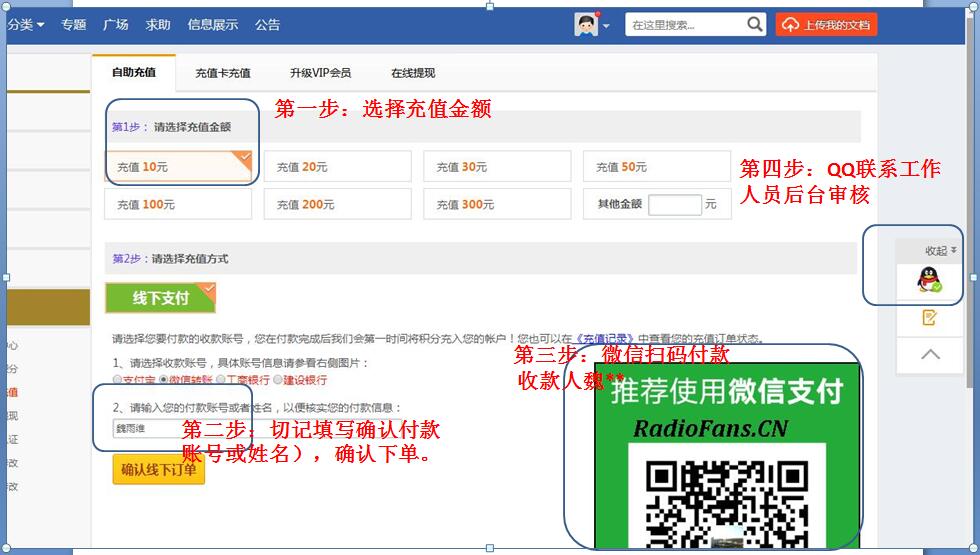《Pye_350C维修电路原理图.pdf》由会员分享,可在线阅读,更多相关《Pye_350C维修电路原理图.pdf(5页珍藏版)》请在收音机爱好者资料库上搜索。
1、Pye 350/C All-Electric 3 1. General The Pye All Electric 3 model 350/C is a three valve, two waveband AC mains TRF receiver. A separate high impedance loudspeaker is required for the set, which embodies a screen grid HF stage (V1, AC/SG), a triode anode bend detector (V2, AC/HL) and a triode output
2、stage (AC/P). A Westinghouse metal rectifier of early design (no cooling fins) is incorporated in the HT power supply, which operates on a voltage doubler principle. The HF and detector stages are tuned separately. The wavelength coverage is approximately 900 - 2300 metres (“long waves”) and 210 - 5
3、20 metres (“short waves”). 2. Circuit details The circuit diagram is below. The aerial circuit is tuned by L1 or L2 and VC1, which has an edgewise slow motion drive and drum scale. Two separate aerial input tappings are provided. V1 is a conventional indirectly heated screen grid valve. This is coup
4、led via L3 or L4 to the detector tuned circuit, L5 or L6 and VC2. The waveband is selected by the mechanically ganged switches S1 and S2. The detector is a triode wired as an anode bend detector. This circuit is unconventional in that reaction is provided via the solid dielectric differential capaci
5、tor VC3 giving feedback to L5 or L6. The reaction winding is itself a part L5 or L6, and so is incorporated in the tuned circuit. Neither the aerial nor detector tuned circuits have a DC connection to chassis, as they are incorporated in the valve biasing arrangements. The detector is coupled to the
6、 output stage V3 with an intervalve LF transformer (T1). A 70 kvariable resistor (VR1) connected across the T1 primary acts as a crude volume control. The output valve is choke-capacity coupled to a loudspeaker using L7 and C7. The power supply for the valve heaters is derived from a 4 volt centre t
7、apped winding on the mains transformer T2. The HT winding is connected to a rectifying and voltage doubling circuit (C12, C13, MR1). Smoothing is accomplished by the choke L8 and capacitors C11 and C10. The HT appears across the resistor R1, which is a sectionally wire wound component. The HT and bi
8、as supplies for the valves are picked off from tappings on V3. Mains voltage adjustment is provided by tappings on T2 primary. Provision is made for using the set with an electric gramophone pick-up. The intermediate position of S1/S2, between long and short waves, breaks all contacts except S2g, an
9、d the detector valve bias conditions are altered so that it acts as a conventional amplifier. Notice that the decoupling components C3, C4, C5 all share a single can, as do the smoothing capacitors C10 -C13. C12 and C13 consist of pairs of capacitors wired in parallel. 3. Component values The compon
10、ent values are given in Table 1. The capacitors were measured from an actual receiver (serial number C26118) using a Wheatstone bridge followed by “rounding” to the probable design value. Resistances were measured on a multimeter. RadioFans.CN 收音机爱 好者资料库 Page 2 4. Voltages and currents Table 2 gives
- 配套讲稿:
如PPT文件的首页显示word图标,表示该PPT已包含配套word讲稿。双击word图标可打开word文档。
- 特殊限制:
部分文档作品中含有的国旗、国徽等图片,仅作为作品整体效果示例展示,禁止商用。设计者仅对作品中独创性部分享有著作权。
- 关 键 词:
- Pye_350C 维修电路原理图 维修 电路 原理图
 收音机爱好者资料库所有资源均是用户自行上传分享,仅供网友学习交流,未经上传用户书面授权,请勿作他用。
收音机爱好者资料库所有资源均是用户自行上传分享,仅供网友学习交流,未经上传用户书面授权,请勿作他用。
 Pye_350C维修电路原理图.pdf
Pye_350C维修电路原理图.pdf



 Crown-XLS202-pwr-sch维修电路图 手册.pdf
Crown-XLS202-pwr-sch维修电路图 手册.pdf


